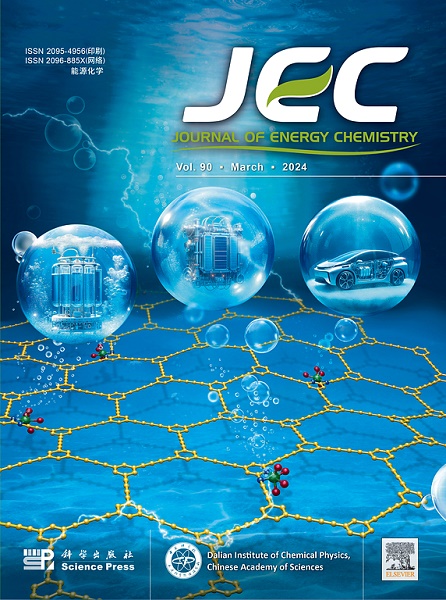Iridium-based electrocatalysts for oxygen evolution reaction in acidic media: from in situ characterization to rational design
IF 13.1
1区 化学
Q1 Energy
引用次数: 0
Abstract
Proton exchange membrane water electrolyzer (PEMWE) is crucial for the storage and conversion of renewable energy. However, the harsh anode environment and the oxygen evolution reaction (OER), which involves a four-electron transfer, result in a significant overpotential that limits the overall efficiency of hydrogen production. Identifying active sites in the OER is crucial for understanding the reaction mechanism and guiding the development of novel electrocatalysts with high activity, cost-effectiveness, and durability. Herein, we summarize the widely accepted OER mechanism in acidic media, in situ characterization and monitoring of active sites during the reaction, and provide a general understanding of the active sites on various catalysts in the OER, including Ir-based metals, Ir-based oxides, carbon/oxide-supported Ir, Ir-based perovskite oxides, and Ir-based pyrochlore oxides. For each type of electrocatalysts, reaction pathways and actual active sites are proposed based on in situ characterization techniques and theoretical calculations. Finally, the challenges and strategic research directions associated with the design of highly efficient Ir-based electrocatalysts are discussed, offering new insights for the further scientific advancement and practical application of acidic OER.

酸性介质中析氧反应用铱基电催化剂:从原位表征到合理设计
质子交换膜水电解槽(PEMWE)是可再生能源储存和转化的关键。然而,恶劣的阳极环境和涉及四电子转移的析氧反应(OER)会导致显著的过电位,从而限制了氢气生产的总体效率。确定OER中的活性位点对于理解反应机理和指导开发具有高活性、高成本效益和耐用性的新型电催化剂至关重要。在此,我们总结了在酸性介质中被广泛接受的OER机理、反应过程中活性位点的原位表征和监测,并对OER中各种催化剂的活性位点进行了总体了解,包括Ir基金属、Ir基氧化物、碳/氧化物负载Ir、Ir基钙钛矿氧化物和Ir基焦氯化物氧化物。对于每种类型的电催化剂,根据原位表征技术和理论计算,提出了反应途径和实际活性位点。最后,讨论了设计高效ir基电催化剂所面临的挑战和战略研究方向,为酸性OER的进一步科学发展和实际应用提供了新的见解。
本文章由计算机程序翻译,如有差异,请以英文原文为准。
求助全文
约1分钟内获得全文
求助全文
来源期刊

Journal of Energy Chemistry
CHEMISTRY, APPLIED-CHEMISTRY, PHYSICAL
CiteScore
19.10
自引率
8.40%
发文量
3631
审稿时长
15 days
期刊介绍:
The Journal of Energy Chemistry, the official publication of Science Press and the Dalian Institute of Chemical Physics, Chinese Academy of Sciences, serves as a platform for reporting creative research and innovative applications in energy chemistry. It mainly reports on creative researches and innovative applications of chemical conversions of fossil energy, carbon dioxide, electrochemical energy and hydrogen energy, as well as the conversions of biomass and solar energy related with chemical issues to promote academic exchanges in the field of energy chemistry and to accelerate the exploration, research and development of energy science and technologies.
This journal focuses on original research papers covering various topics within energy chemistry worldwide, including:
Optimized utilization of fossil energy
Hydrogen energy
Conversion and storage of electrochemical energy
Capture, storage, and chemical conversion of carbon dioxide
Materials and nanotechnologies for energy conversion and storage
Chemistry in biomass conversion
Chemistry in the utilization of solar energy
 求助内容:
求助内容: 应助结果提醒方式:
应助结果提醒方式:


